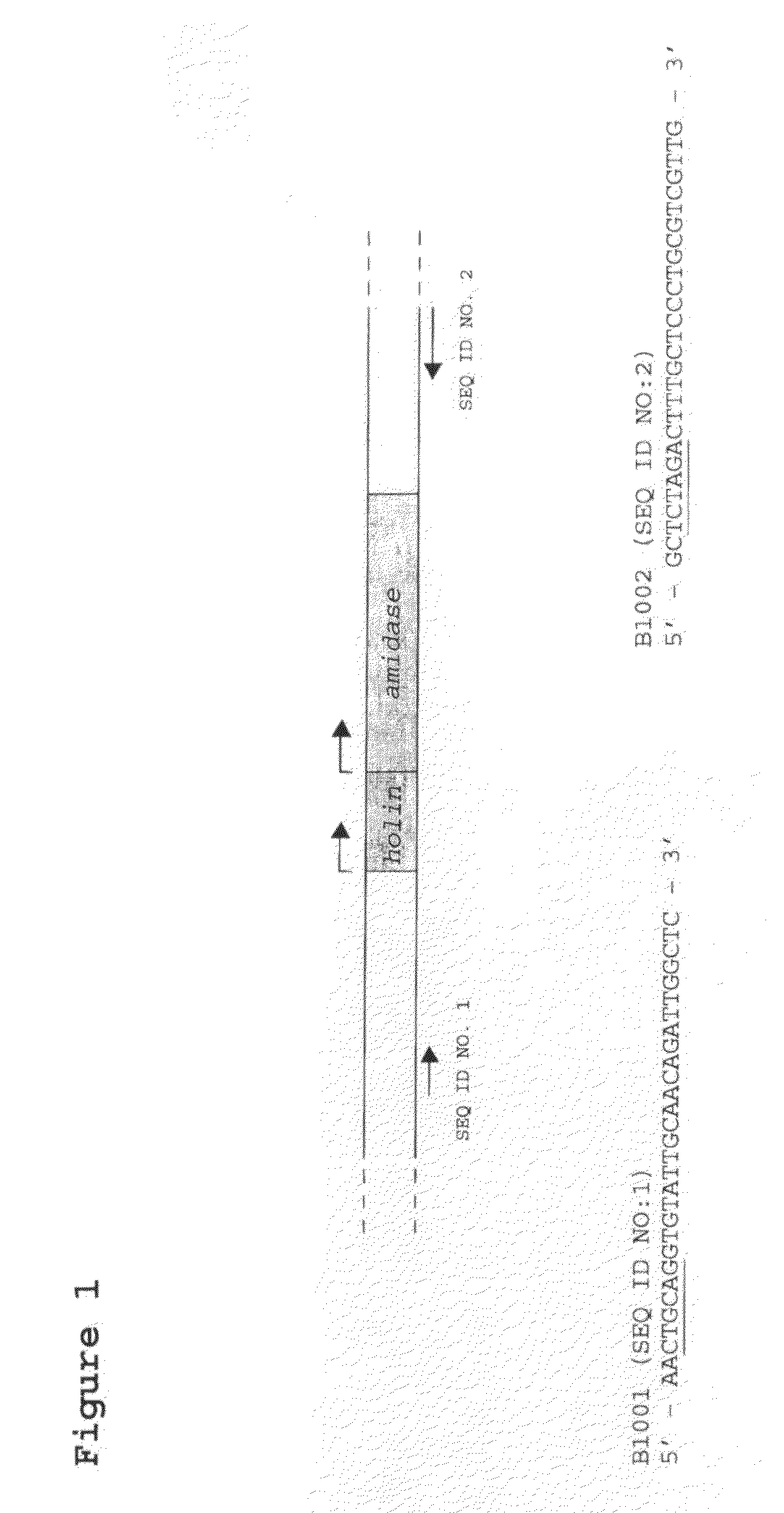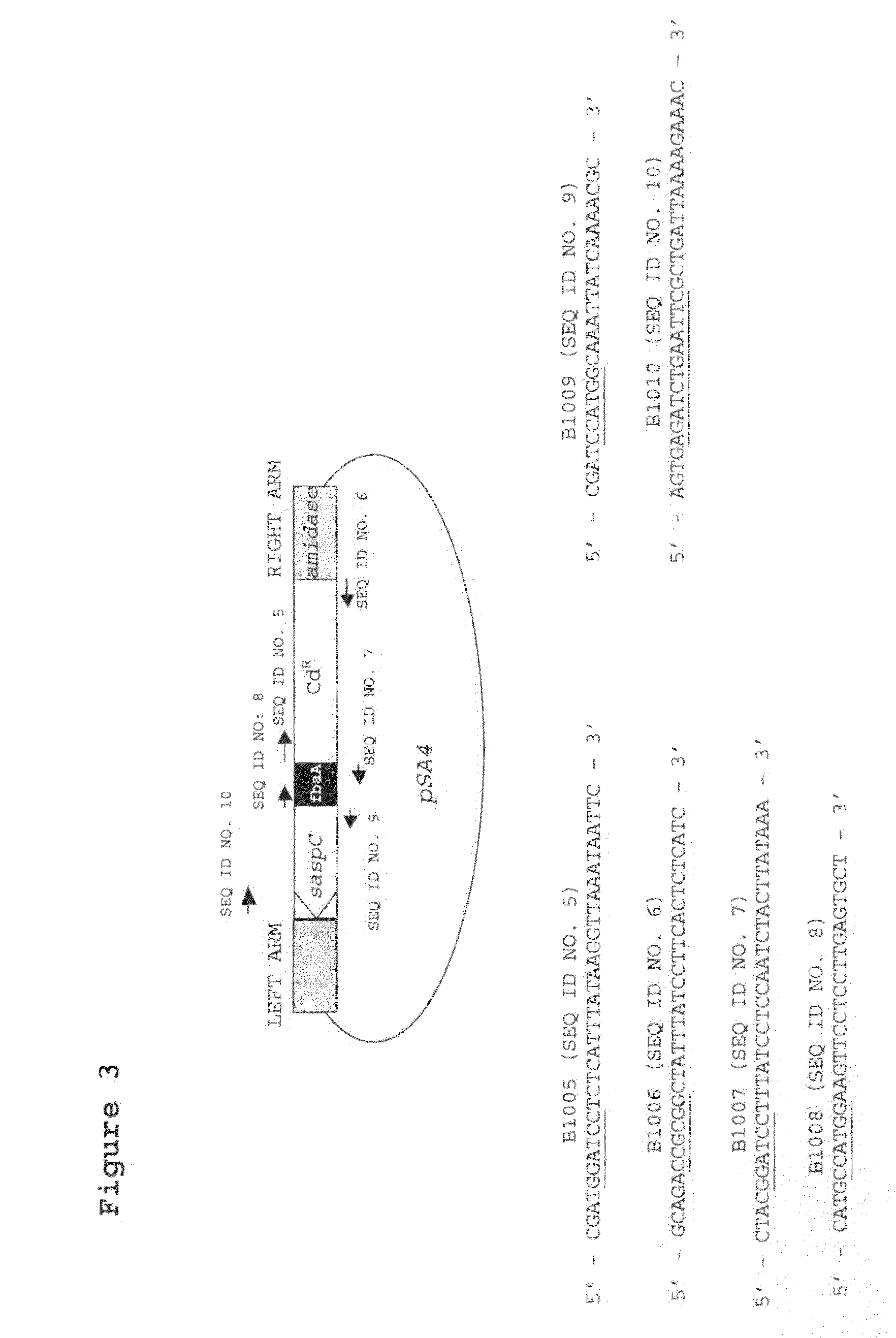Modified bacteriophage including an alpha/beta small acid-soluble spore protein (SASP) gene
a technology of acid-soluble spores and bacteriophage, which is applied in the direction of peptides, plant/algae/fungi/lichens ingredients, medical preparations, etc., can solve the problems of mrsa strains that have become a problem in the community, add to the difficulty of controlling mrsa infections in hospitals, and may be life-threatening, so as to prevent, eliminate or reduce the carriage of bacteria and contamination, and limit the transmission of microbial infections
- Summary
- Abstract
- Description
- Claims
- Application Information
AI Technical Summary
Benefits of technology
Problems solved by technology
Method used
Image
Examples
Embodiment Construction
[0024]The present invention will now be described in further detail, by way of example only, with reference to the accompanying drawings and the following example.
BRIEF DESCRIPTION OF THE DRAWINGS
[0025]FIG. 1. Region of S. aureus phage φ11, showing the holin and amidase genes, and the priming sites for amplification of the genes and flanking DNA
[0026]FIG. 2. Diagram of pSA1, showing the cloned region and the location of the priming sites for inverse PCR of pSA1.
[0027]FIG. 3. Diagram of pSA4, showing the cloned promoter-saspC region with the cadmium resistance (CdR) gene and the flanking φ11 DNA, together with the location of relevant priming sites.
[0028]FIG. 4. Arrangement of DNA within the genome of PTL1003, showing the replacement of the holin gene with foreign genes. The arrangement of genes in the wild-type φ11 genome is shown for comparison.
[0029]FIG. 5. An example of a kill curve showing efficacy of PTSA1.2 / A against an S. aureus strain.
[0030]FIG. 6. A kill curve comparing the...
PUM
| Property | Measurement | Unit |
|---|---|---|
| non-antibiotic resistance | aaaaa | aaaaa |
| resistance | aaaaa | aaaaa |
| cryoelectron microscopy | aaaaa | aaaaa |
Abstract
Description
Claims
Application Information
 Login to View More
Login to View More - R&D
- Intellectual Property
- Life Sciences
- Materials
- Tech Scout
- Unparalleled Data Quality
- Higher Quality Content
- 60% Fewer Hallucinations
Browse by: Latest US Patents, China's latest patents, Technical Efficacy Thesaurus, Application Domain, Technology Topic, Popular Technical Reports.
© 2025 PatSnap. All rights reserved.Legal|Privacy policy|Modern Slavery Act Transparency Statement|Sitemap|About US| Contact US: help@patsnap.com



